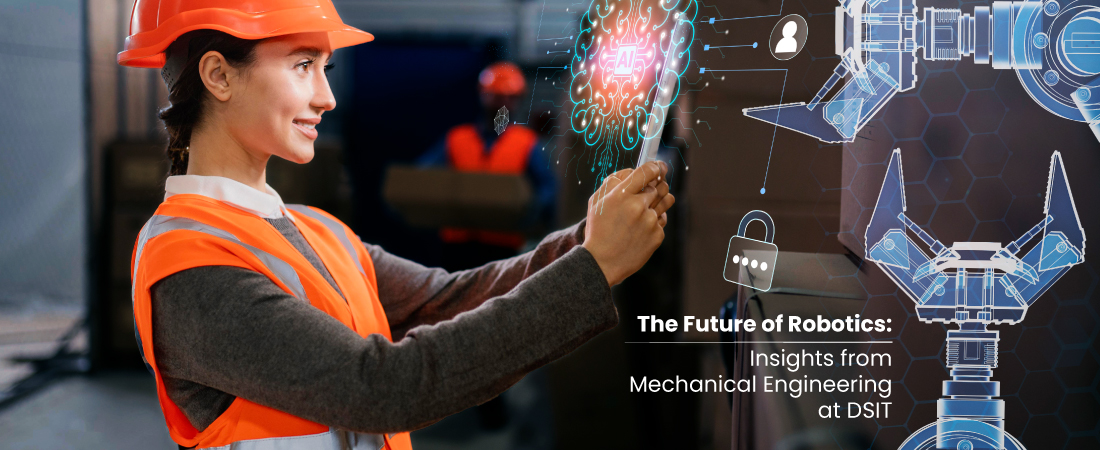
Once novel gizmos in Star War movies and other sci-fi films, robots are today a reality, extensively used in several industries. Most of us would have seen robots welding, painting and testing components in automotive companies, handling chemicals in pharmaceutical companies or sorting quality products from the defective ones in manufacturing plants. But thanks to advancements in Artificial Intelligence (AI), robots are getting intelligent, can think and respond, and execute instructions. And experts say the possibilities are endless. Let’s look at some of the future trends in robotics and how they can impact our lives over the years.
Artificial Intelligence and Machine Learning - These are the two most promising developments, and prime movers in the robotics space. AI enables robots to perform tasks that would otherwise be too complex. ML enables robots to learn from their experiences and add to their capabilities over time. This technology is being deployed in devices such as autonomous vehicles, industrial robots, drones and similar devices and the demand for such applications is expected to grow over the years.
Collaborative Robots - Collaborative robots or ‘Cobots’ are being designed to work along with humans in various scenarios. While industrial robots are separated from humans due to safety reasons, cobots can function safely alongside humans. They are largely deployed in assembly, packaging and quality control
Soft Robotics - A fast emerging field, this space focuses on robots made using soft and flexible materials such as silicone and elastomers. These robots are designed to adapt to their surroundings and interact with objects in a more natural manner when compared with the regular robots. These robots are expected to have a huge impact in industries as diverse as healthcare, rehabilitation and manufacturing.
Swarm Robotics - Swarm robotics involves the study and development of large groups of robots with simple functionality and how they could work together to achieve complex tasks. Typically small and technically simple, these are made to work in synergy in large numbers to achieve effective results. Applications could be in activities such as search and rescue, environmental monitoring etc.
Autonomous Vehicles - One of the most widely discussed initiatives in recent times and an area that’s attracted humungous investments and fierce competition between some of the largest corporations in the world, autonomous vehicles are expected to revolutionise the way we travel in the coming years. One of the most widely-discussed applications in robotics, these vehicles are designed with sensors, GPS, and AI for navigation and decision making. Self-driving cars and similar vehicles are poised to transform transportation by reducing accidents, improving the flow of traffic and helping in better space management.
Medical Robotics – Fascinating developments have been taking place in the area of healthcare and medical robotics is one of the rapidly-growing fields transforming the way procedures are being conducted and healthcare is being delivered. Robots assist surgeons in performing surgeries, rehabilitation, patient care and a variety of other tasks. Tasks can be performed with greater precision and accuracy, enabling skilled surgeons to focus on special tasks in their service of society.
Humanoid Robots - Humanoid robots are designed to look like humans in appearance and mobility. Although these robots are still confined to prototypes, they promise to transform a range of industries. Applications of humanoid robots are expected to be in the areas of entertainment, areas such as sales & marketing and education.
Augmented Reality - AR delivers visuals, sound, and other information through devices such as smartphones or eyewear. Specially augmented information is overlaid onto this visual stream to create an experience which is more informative and intuitive.
As we look towards the future of mechanical engineering, it's clear that robotics will play a pivotal role in shaping the industry. From artificial intelligence to collaborative robots and autonomous vehicles, the possibilities are endless. At Dayananda Sagar Institute of Technology (DSIT), we are committed to preparing students for this dynamic field by providing a comprehensive education that combines theoretical knowledge with hands-on experience.
Through our diploma program in Mechanical Engineering, students have the opportunity to delve into the exciting world of robotics and explore the latest trends and advancements in the field. With state-of-the-art facilities and a dedicated faculty, we strive to equip our students with the skills and knowledge they need to succeed in this rapidly evolving industry.
By staying abreast of emerging technologies and fostering a culture of innovation, we aim to empower the next generation of mechanical engineers to make meaningful contributions to society. Join us at DSIT and be part of the future of robotics and mechanical engineering.
Copyright © 2023 Dayananda Sagar Institutions. All Rights Reserved.